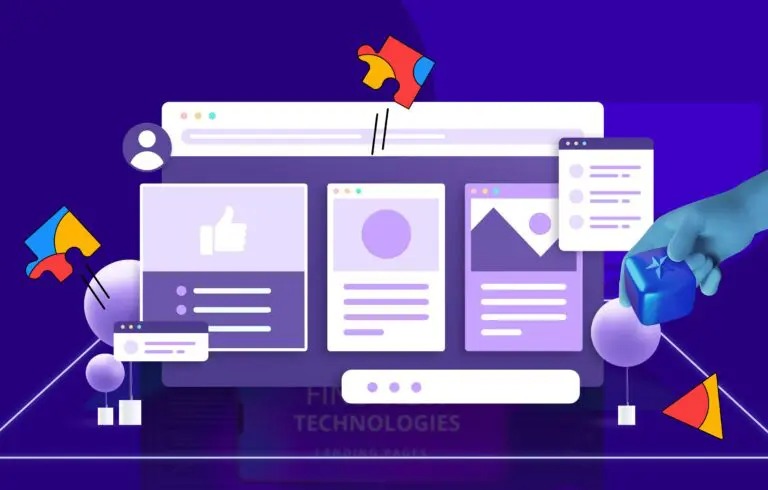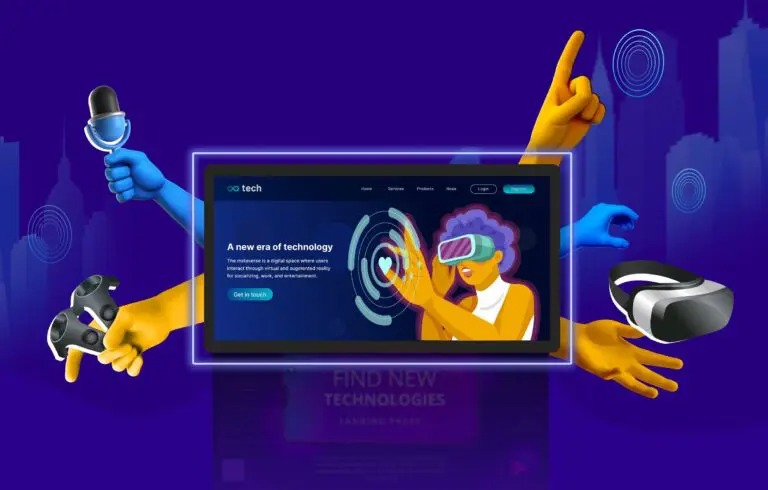With an ever-evolving and rapidly growing digital world, a greater number of users have shortened attention spans. The window to dissipate information has narrowed to a short section on any web page the users land on. Studies have shown that 57% of users’ viewing time on a web page is dictated by above-the-fold content. With better content and user experience, you are destined to receive higher traffic to your website. Even though above-the-fold design and content recommendations have grown more complex with each passing year, it is a critical part of your web page.
Stuti Mazumdar & Vidhi Tiwari - March 2024

The Importance Of Above The Fold
The terminology, above-the-fold, dates back to the advent of the printing press. Now, it is used to talk about the difference in the way information is displayed in various sections of the web page, as part of the website design.
The experience above the fold—content, design, ads, altogether impacts the retention of the user on the website. It directly influences critical KPIs, including bounce rate, which is the percentage of website visitors who navigate out of it after viewing just one page, and conversion, which is lead capture through various on-page marketing strategies.

1. First Impressions Count:
The first few seconds a visitor spends on your website are critical. The content above the fold acts as a visual handshake and sets the tone for the user’s experience. A well-crafted above-the-fold section can captivate attention and encourage users to stay longer, thus, reducing the bounce rates.
2. Reducing Bounce Rates:
Bounce rate is the percentage of visitors who navigate away from a site after viewing only one page. This KPI is meticulously tracked and additional measures are taken to ensure this remains as low as possible. It can be mitigated by delivering engaging content immediately, right when the user lands on the web page. An impactful above-the-fold design can lower bounce rates by providing users with relevant information and encouraging them to explore further.
3. Mobile Responsiveness:
With the increase of mobile devices, designing above the fold becomes even more crucial. Users on smartphones and tablets may have limited screen real estate, making it imperative to convey key information and value propositions prominently.
What To Consider When Crafting Fold Designs?
Creating an above-the-fold experience for website visitors is an intricate art. It is a seamless blend of effective design practices, compelling content, and influential marketing strategies.
1. Content Hierarchy
The information above the fold, that is the content hierarchy and prioritization of information for your average visitor plays a pivotal role in user retention on a web page. Since this is the first impression made on the site visitors, it is essential that the section brings to the user precisely what they wish to know upon landing on the web page.
2. The Next Steps
On visiting a landing page, most users immediately expect to view certain website features, including sign-up widgets, interactive elements such as carts, personalized recommendations, etc. If visitors don’t find the next steps, their growing frustration often leads to higher bounce rates. This negatively impacts your website’s SEO as SERPs, like Google, push websites with higher traffic as first-page search results.
3. Ads Above The Fold
While the placement of ads above the fold seems like an ideal strategy, it may hamper the user experience. While this section is ideal for highlighting ads, thus, increasing a higher possibility of user interaction and revenue, they should be limited to avoid overcrowding the space and driving the attention away from the intent of the page.
Furthermore, Google’s algorithm inhibits web pages from ranking higher if they’re flagged to be clickbait-y. That is, certain algorithms such as the Page Layout algorithm are designed to flag pages that populate the area above the fold with non-contextual elements, such as ads.
4. Screen Resolutions
Another intricate detail to keep in mind when designing a web page that falls above the fold is the technical aspect of screen resolutions. Since we are witnessing a shift in website visits away from your trusty desktop and towards handheld devices, we see a rise in responsive websites that adapt to various screen sizes.
Responsive design principles, thus, drive the content design to ensure the most important and relevant information always remains at the top of the fold.
5. Getting Technical
Loading speed impacts the SEO ranking of a web page too. If your web page loads too late, there are higher chances of an increase in the bounce rate which ultimately affects the SEO. After all, no visitor would want to hang around for a website that takes too long to display the information they are currently looking for.
6. A Compelling H1
Meeting the website visitors where they are is always a better user retention strategy. If upon landing on a web page, they are immediately able to read a crisp and clear heading embedded with essential keywords that helps them identify that it’s a relevant website, you are likely to retain them for an extended period of time. Hence, work on crafting a compelling yet clear headline to capture a visitor’s attention swiftly.
7. Important CTAs only!
Just like ads, we are often tempted to provide visitors with CTAs in the first fold. However, visitors landing on a web page often require further proof before taking the required action through the ideal user journey. In such cases, it would be beneficial to retain only critical CTAs above the fold.
8. Concise Copywriting
Craft concise and compelling copy that complements the visuals and headline, as the information above the fold since the goal is to allow the user to scan the text seamlessly. To avoid information overload, we can instead, focus on conveying the most relevant and impactful messaging. Using bullet points, short paragraphs, and strategic spacing for readability is highly recommended.
9. Consistent Brand Voice
Maintaining a consistent brand voice through text and UI amounts to a better user experience. Use brand colors, fonts, and imagery that would align with the overall brand guidelines to ensure no gaps in visual communication remain on the web page. After all, consistent branding instills trust and reinforces the user’s connection with the website.
10. Embed Videos
Capturing the attention of a visitor is always easy with visual content. Moving beyond static images, consider incorporating multimedia elements such as videos, GIFs, interactive features, 3D iconography, etc.
Videos can be particularly effective in conveying information quickly and engagingly. Ensure that multimedia elements enhance the user experience rather than detract from it.
11. Test Test Test!
Rarely do websites nail their above-the-fold content design in the first go. It takes a good number of iterations to reach a satisfactory version that works! To avoid the trouble, it is recommended to conduct A/B texting of the web design.
Implement A/B testing to experiment with different above-the-fold layouts, headlines, and CTAs. Analyze user behavior and performance metrics to determine which design elements resonate best with your target audience. Continuously refine based on data-driven insights.
Emerging Technologies That Will Shape The Future Of Above-The-Fold Designs

The integration of emerging technologies has the potential to reshape the way users interact with websites. Several innovations, may influence and enhance the above-the-fold design. Here’s a closer look at the impact of emerging technologies:
1. VR and AR
VR ought to drive immersive visual experiences. Above-the-fold content could extend beyond traditional 2D media, offering immersive experiences that showcase brand narratives better. Additionally, this could also help viewers immerse themselves in 360-degree visuals in the above-the-fold section. Allowing visitors to explore a virtual space facilitating a more interactive and engaging walkthrough the website, this technology is such to drive more engagement.
2. AI-Driven Personalization
AI-driven algorithms can analyze user behavior and preferences to offer personalized experiences for website visitors. By harnessing the power of this technology, we can display product and content recommendations for visitors, enriching the content above the fold.
3. Voice-Interaction
Voice interaction has become increasingly prevalent, thanks to the rise of virtual assistants worldwide. They can help website visitors engage with the call to actions directly from the above-the-fold section of the website.
4. AR Interactions
AR elements can transform static content into interactive, three-dimensional objects that users can engage with. This would drastically change the was website visitors visualize products in their own physical environment directly from the above-the-fold section of the website.
As web design continues to evolve, staying aligned with emerging technologies is crucial for creating forward-thinking and innovative above-the-fold experiences. While not every website may immediately adopt these technologies, understanding their potential impact allows designers to prepare for the future and consider how these advancements can be leveraged to enhance user engagement, interactivity, and overall satisfaction.
User behavior is ever-changing and evolving. As we currently witness the shift of website visitors to smaller screen sizes, such as smartphones and tablets, they are seen scrolling involuntarily.
However, “above the fold” shouldn’t be limited to a design consideration to be made when working on a website.




